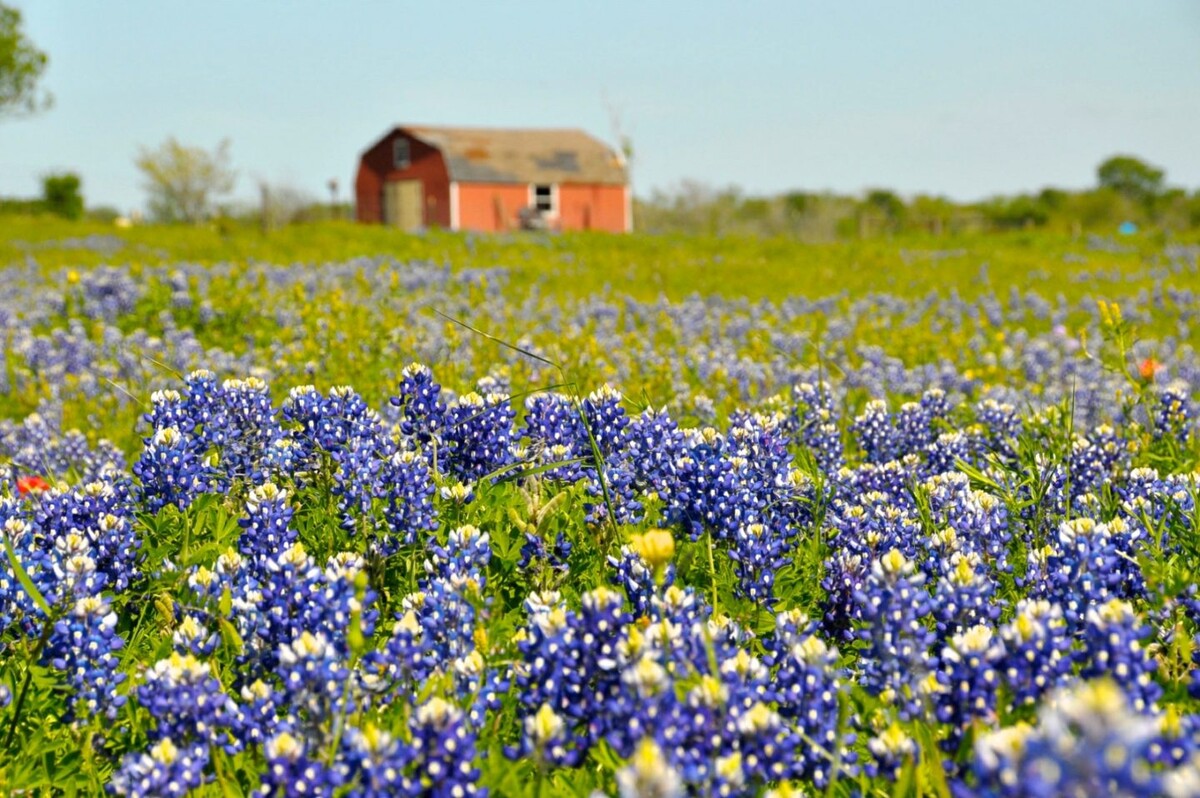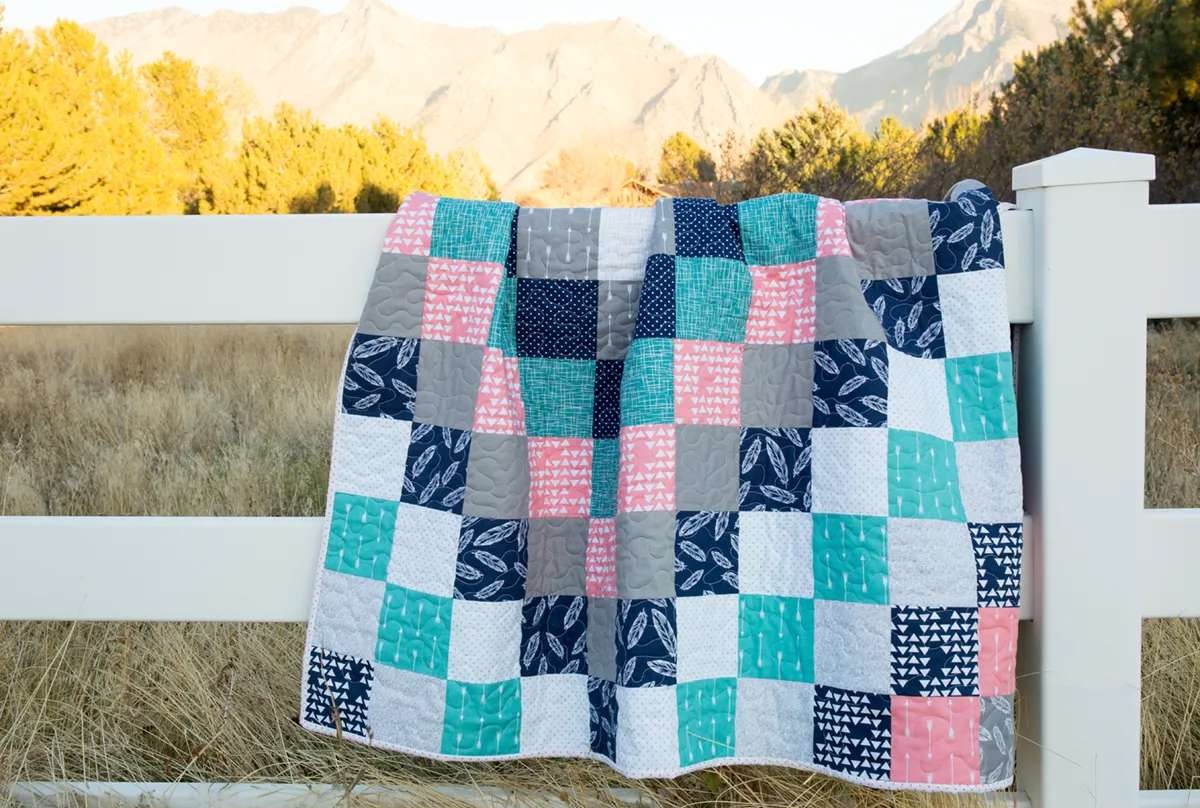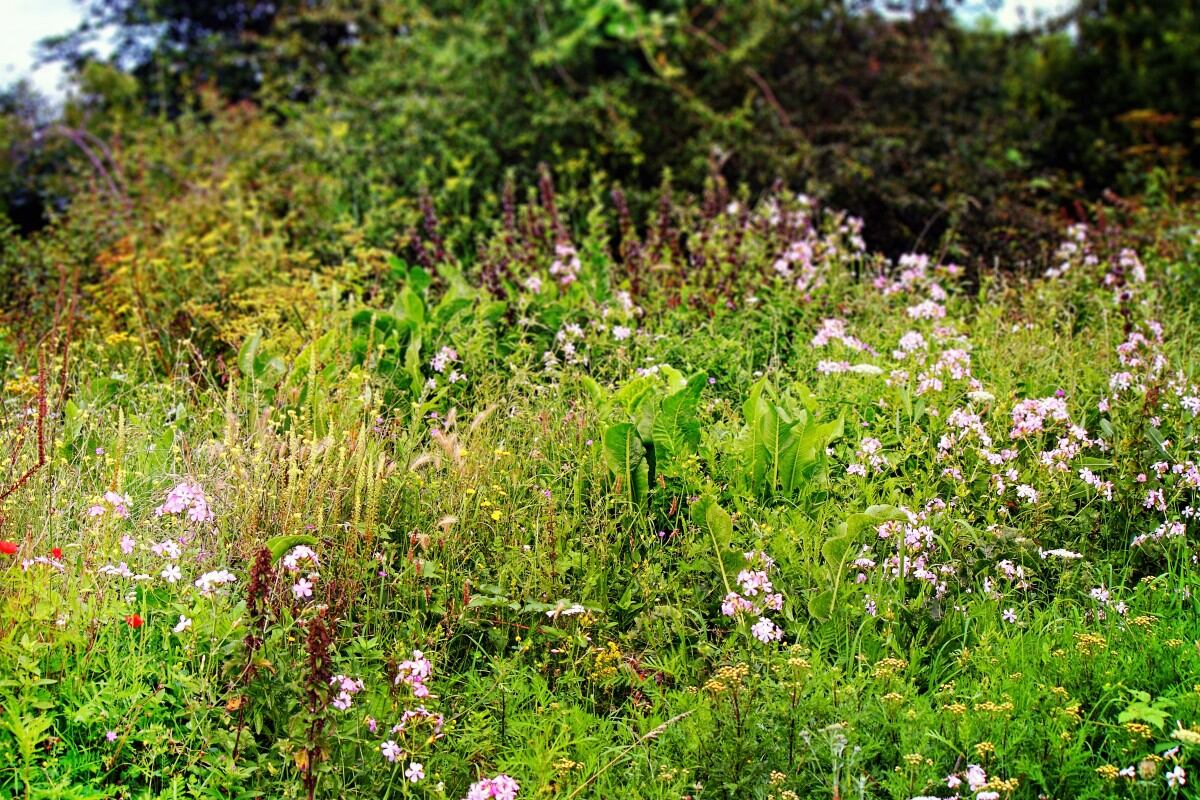Home>Gardening & Outdoor>Plant Care & Gardening Tips>What Is The Most Popular Wildflower


Plant Care & Gardening Tips
What Is The Most Popular Wildflower
Modified: January 5, 2024
Discover the most popular wildflower and get expert plant care and gardening tips to grow a vibrant and thriving garden. Explore essential insights and advice for nurturing your plants.
(Many of the links in this article redirect to a specific reviewed product. Your purchase of these products through affiliate links helps to generate commission for Storables.com, at no extra cost. Learn more)
**
Introduction
**
Wildflowers are a delightful and vibrant addition to any landscape, bringing bursts of color and a touch of natural beauty to gardens, meadows, and open spaces. These resilient and often native blooms are known for their ability to thrive with minimal care, making them a popular choice for both experienced and novice gardeners. In addition to their visual appeal, wildflowers also play a crucial role in supporting local ecosystems by providing food and habitat for pollinators and other wildlife.
In this article, we will explore some of the most popular wildflowers, celebrating their unique characteristics and the joy they bring to outdoor spaces. From the iconic sunflower to the charming bluebonnet and the striking Indian paintbrush, each wildflower has its own story to tell and its own special place in the hearts of nature enthusiasts. Whether you're looking to plant a wildflower garden, add a splash of color to your yard, or simply appreciate the beauty of these natural wonders, this guide will offer insights into some of the most beloved wildflowers and their cultural significance. Join us on a journey through fields of vibrant blooms and discover the allure of these beloved wildflowers.
Key Takeaways:
- Sunflowers are the most popular wildflowers, symbolizing warmth and vitality. They’re easy to grow, attract pollinators, and have cultural significance, bringing joy and natural beauty to outdoor spaces.
- Bluebonnets, California poppies, Indian paintbrushes, and black-eyed Susans are also beloved wildflowers, each with unique qualities and cultural significance. They add bursts of color, support local ecosystems, and inspire wonder and admiration.
The Most Popular Wildflower: Sunflower
When it comes to iconic wildflowers, few blooms capture the essence of sunshine and happiness quite like the sunflower. With its striking yellow petals and dark, contrasting center, the sunflower is a symbol of warmth, positivity, and natural beauty. These radiant blooms are native to North America and have captivated people around the world with their stunning appearance and versatile uses.
One of the most fascinating aspects of sunflowers is their unique behavior known as heliotropism, where the young flower heads track the movement of the sun across the sky, facing east in the morning and gradually shifting westward as the day progresses. This mesmerizing dance with the sun has inspired countless artists, writers, and nature enthusiasts, making the sunflower a beloved emblem of vitality and optimism.
Aside from their visual appeal, sunflowers also offer practical benefits to both humans and wildlife. The seeds of the sunflower are a popular snack and a valuable source of nutrition, often enjoyed roasted or as a key ingredient in bird feed. Additionally, sunflower oil, extracted from the seeds, is widely used in cooking and as a healthy alternative to traditional oils.
For gardeners, sunflowers are a joy to cultivate, as they are relatively easy to grow and can thrive in a variety of soil types. Whether planted in rows to create a stunning visual display or scattered throughout a garden to attract pollinators, sunflowers bring a sense of cheer and vitality to any outdoor space. Their resilience and adaptability make them a popular choice for both ornamental and practical gardening purposes.
Embracing the spirit of the sunflower can also extend beyond the garden, as these blooms have inspired art, literature, and cultural traditions throughout history. From ancient mythology to modern popular culture, the sunflower continues to symbolize warmth, adoration, and the enduring beauty of nature.
Whether adorning a vase in a sunlit room or swaying in the breeze of a vast field, the sunflower remains a timeless emblem of joy and natural splendor, captivating hearts and uplifting spirits with its radiant presence.
The Most Popular Wildflower: Bluebonnet
Steeped in the rich heritage of the Lone Star State, the bluebonnet stands as a beloved symbol of Texas and a cherished wildflower admired by nature enthusiasts worldwide. Known for its vibrant indigo hue and distinctive shape, the bluebonnet graces the landscape with an enchanting display of color, marking the arrival of spring in a breathtaking fashion.
Bluebonnets, scientifically classified as Lupinus texensis, are an integral part of Texas’s natural tapestry, where they blanket fields, roadsides, and meadows with their striking blooms. Their captivating appearance and cultural significance have made them an enduring emblem of the state’s natural beauty and pioneering spirit.
Legend has it that the bluebonnet’s significance in Texas folklore dates back to the early 18th century, with tales of how the flower’s blue petals symbolize the bravery and resilience of the early settlers and Native American tribes. This folklore has woven the bluebonnet into the fabric of Texas history, endearing it to generations of Texans and captivating the imagination of all who encounter its breathtaking display.
For gardeners and wildflower enthusiasts, the bluebonnet presents an opportunity to cultivate a piece of Texas’s natural legacy. These hardy and drought-tolerant flowers thrive in well-drained soil and full sunlight, making them a resilient choice for gardens and landscapes with arid conditions. Their ability to self-seed and naturalize further adds to their appeal, allowing them to return year after year with minimal maintenance.
Each spring, the sight of vast bluebonnet fields in bloom draws visitors from near and far, inspiring artists, photographers, and nature lovers to capture the beauty of these iconic wildflowers. From paintings and photographs to festivals and celebrations, the bluebonnet continues to be a source of inspiration and admiration, embodying the spirit of renewal and natural splendor.
Whether adorning the countryside in a sea of blue or adding a touch of elegance to a garden, the bluebonnet remains a timeless symbol of Texas’s natural heritage and a testament to the enduring allure of wildflowers.
The Most Popular Wildflower: California Poppy
With its radiant golden-orange petals and delicate, fern-like foliage, the California poppy stands as a symbol of resilience and natural beauty, gracing the landscapes of the Golden State with its enchanting presence. This iconic wildflower, known scientifically as Eschscholzia californica, holds a special place in the hearts of Californians and wildflower enthusiasts alike, captivating all who encounter its vibrant blooms.
The California poppy’s significance extends beyond its visual appeal, as it has been designated as the official state flower of California, a testament to its cultural and botanical importance. Its ability to thrive in diverse environments, from arid deserts to coastal plains, reflects the spirit of adaptability and endurance, making it a fitting emblem for the state’s diverse ecosystems.
One of the most captivating aspects of the California poppy is its unique response to sunlight, as its flowers open in the morning and close in the evening, creating a mesmerizing dance with the sun. This behavior has inspired artists, poets, and nature enthusiasts, evoking a sense of wonder and admiration for the natural world and its intricate rhythms.
Gardeners and wildflower enthusiasts are drawn to the California poppy for its ease of cultivation and its ability to thrive in a variety of settings. Whether scattered in meadows, nestled in rock gardens, or adorning slopes and hillsides, these resilient blooms bring a touch of warmth and vitality to outdoor spaces, attracting pollinators and adding a pop of color to the landscape.
Throughout history, the California poppy has been celebrated in art, literature, and cultural traditions, embodying the spirit of renewal and the enduring beauty of nature. Its presence in paintings, photography, and festivals reflects its timeless allure and the profound impact it has had on the cultural landscape of California.
Whether dotting the hillsides in a blaze of golden hues or adding a touch of elegance to a garden, the California poppy continues to captivate hearts and inspire a sense of wonder, reminding us of the enduring beauty and resilience found in wildflowers.
The most popular wildflower is the bluebonnet, which is the state flower of Texas. It blooms in the spring and can be found in fields and along roadsides.
The Most Popular Wildflower: Indian Paintbrush
With its vibrant and striking appearance, the Indian paintbrush, also known as Castilleja, stands as a captivating symbol of natural beauty and resilience in the wildflower kingdom. This iconic bloom, characterized by its unique and vivid red, orange, or yellow bracts, adds a touch of drama and elegance to the landscapes it graces, captivating the hearts of nature enthusiasts and wildflower aficionados.
The Indian paintbrush’s distinct appearance and cultural significance have earned it a place of honor in the folklore and traditions of various indigenous tribes across North America. Revered for its striking beauty and medicinal properties, this wildflower holds a special place in the hearts of those who appreciate its unique qualities and the sense of wonder it evokes.
One of the most fascinating aspects of the Indian paintbrush is its relationship with certain species of hummingbirds, which are drawn to the flower’s nectar and play a crucial role in its pollination. This captivating dance between flower and pollinator adds to the allure of the Indian paintbrush, highlighting its role in supporting local ecosystems and the delicate balance of nature.
For gardeners and wildflower enthusiasts, the Indian paintbrush presents a unique opportunity to cultivate a piece of the natural world’s splendor. While it requires specific conditions to thrive, including well-drained soil and ample sunlight, the reward of witnessing its vibrant display makes it a sought-after addition to gardens and natural landscapes.
Throughout history, the Indian paintbrush has been celebrated in art, literature, and cultural traditions, embodying the spirit of resilience and the enduring beauty of nature. Its presence in indigenous folklore, paintings, and poetry reflects its timeless allure and the profound impact it has had on the cultural and natural landscape.
Whether adorning open meadows with a splash of vibrant color or adding a touch of elegance to a native plant garden, the Indian paintbrush continues to captivate hearts and inspire a sense of wonder, reminding us of the enduring beauty and resilience found in wildflowers.
Read more: What Is The Most Popular Toothbrush Color?
The Most Popular Wildflower: Black-eyed Susan
With its cheerful golden petals and distinctive dark centers, the black-eyed Susan, scientifically known as Rudbeckia hirta, stands as a beloved symbol of resilience and natural splendor in the world of wildflowers. This iconic bloom, native to North America, graces meadows, gardens, and open spaces with its vibrant display, capturing the hearts of gardeners and nature enthusiasts alike.
The black-eyed Susan’s enduring popularity can be attributed to its versatility and hardiness, making it a cherished addition to a variety of landscapes and gardening styles. Whether planted in mass groupings to create a stunning visual impact or intermingled with other perennials to attract pollinators, these radiant blooms bring a sense of warmth and vitality to outdoor spaces.
One of the most captivating aspects of the black-eyed Susan is its role in supporting local ecosystems, as its nectar-rich flowers attract a diverse array of pollinators, including bees, butterflies, and beneficial insects. This contribution to biodiversity underscores the importance of wildflowers in sustaining healthy and vibrant natural environments.
For gardeners, the black-eyed Susan offers a low-maintenance and high-reward option, thriving in a range of soil types and growing conditions. Its ability to naturalize and self-seed makes it a valuable addition to wildflower meadows and naturalistic landscapes, where it can create a tapestry of golden blooms that endure throughout the growing season.
Throughout history, the black-eyed Susan has been celebrated in art, literature, and cultural traditions, embodying the spirit of resilience and the enduring beauty of nature. Its presence in paintings, poetry, and folklore reflects its timeless allure and the profound impact it has had on the cultural and natural landscape.
Whether dancing in the breeze of a wild meadow or adding a touch of elegance to a garden border, the black-eyed Susan continues to captivate hearts and inspire a sense of wonder, reminding us of the enduring beauty and resilience found in wildflowers.
Conclusion
Wildflowers hold a special place in the hearts of nature enthusiasts, gardeners, and admirers of natural beauty. From the iconic sunflower and the charming bluebonnet to the vibrant California poppy, the striking Indian paintbrush, and the cheerful black-eyed Susan, each wildflower weaves a unique story of resilience, vitality, and natural splendor.
These beloved blooms not only add bursts of color to landscapes but also play a crucial role in supporting local ecosystems by providing food and habitat for pollinators and other wildlife. Their ability to thrive with minimal care makes them a popular choice for both experienced and novice gardeners, adding a touch of elegance and warmth to outdoor spaces.
Throughout history, wildflowers have inspired art, literature, and cultural traditions, embodying the enduring beauty and resilience found in the natural world. Their presence in indigenous folklore, paintings, and poetry reflects their timeless allure and the profound impact they have had on the cultural and natural landscape.
Whether adorning open meadows with a splash of vibrant color, adding a touch of elegance to a garden border, or gracing the landscapes of diverse ecosystems, wildflowers continue to captivate hearts and inspire a sense of wonder. Their enduring beauty serves as a reminder of the delicate balance and resilience found in the natural world, inviting us to appreciate and cherish the splendor of these beloved blooms.
As we celebrate the most popular wildflowers, we are reminded of the joy and vitality they bring to our lives, the cultural significance they hold, and the essential role they play in sustaining the beauty and biodiversity of our natural world. Whether in a vast field, a carefully tended garden, or the pages of art and literature, wildflowers continue to enchant, uplift, and inspire, inviting us to embrace the enduring allure of nature’s most beloved treasures.
Frequently Asked Questions about What Is The Most Popular Wildflower
Was this page helpful?
At Storables.com, we guarantee accurate and reliable information. Our content, validated by Expert Board Contributors, is crafted following stringent Editorial Policies. We're committed to providing you with well-researched, expert-backed insights for all your informational needs.















0 thoughts on “What Is The Most Popular Wildflower”